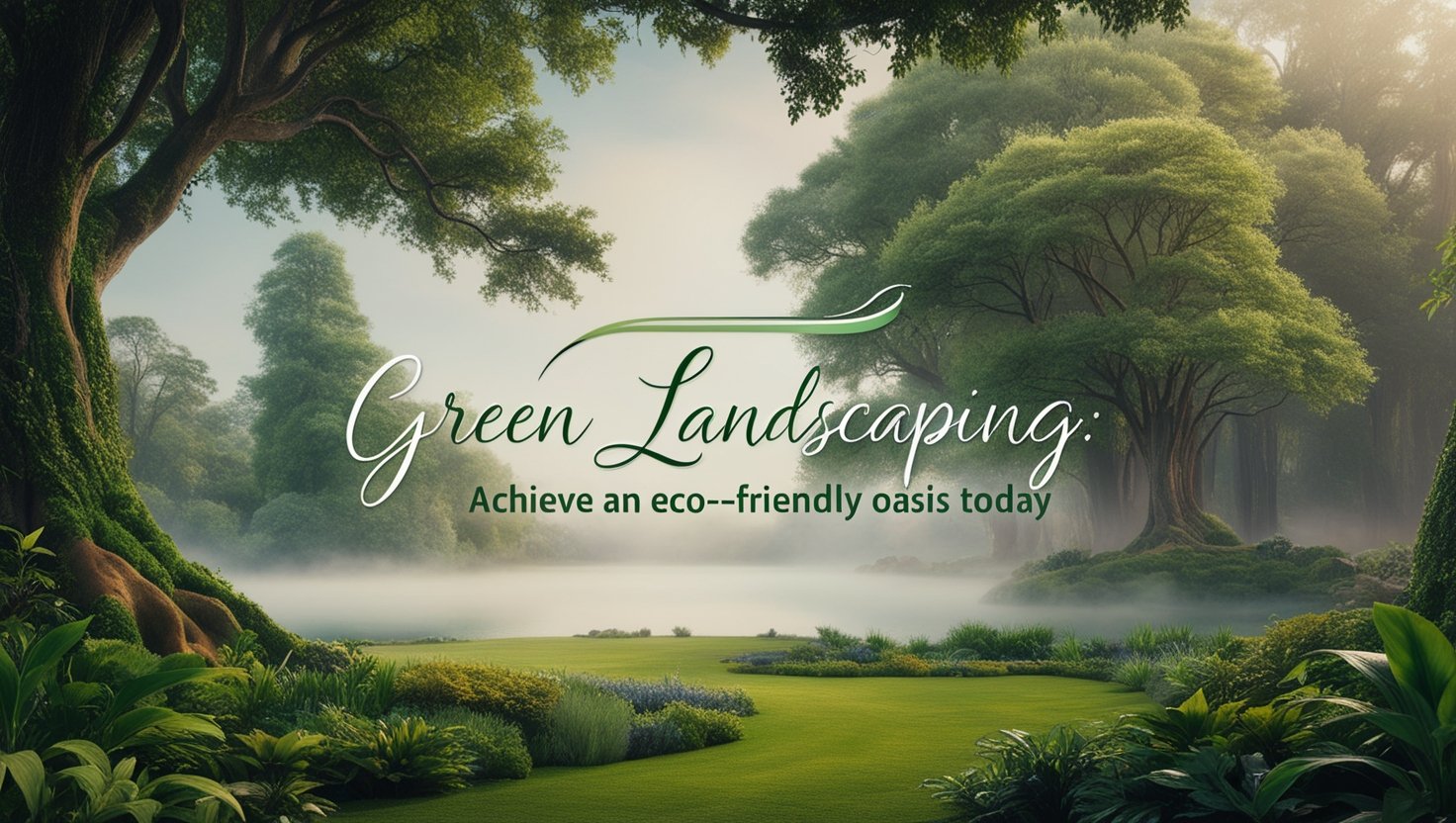In an era where environmental awareness is growing, adopting sustainable practices in landscaping has become increasingly important. Green landscaping, a method that emphasizes eco-friendly practices, energy conservation, and biodiversity, is transforming outdoor spaces into environmentally responsible havens. Companies like Always Green Landscaping lead the way by combining expertise and innovation to create landscapes that are as sustainable as they are beautiful. Let’s delve into the principles, benefits, and practices of green landscaping.
What is Green Landscaping?
Green landscaping refers to the design, creation, and maintenance of outdoor spaces with a focus on sustainability. This approach minimizes negative environmental impacts by incorporating techniques that conserve resources, promote biodiversity, and reduce waste. It emphasizes the use of native plants, efficient water management, and environmentally friendly materials.
Unlike traditional landscaping, which often relies on chemical fertilizers, excessive water use, and non-native plants, green landscaping seeks harmony with the natural environment.It’s tied in with making spaces that are outwardly engaging as well as naturally advantageous.
Core Principles of Green Landscaping
1. Native Plants: Native plants are a cornerstone of green landscaping. These plants are naturally adapted to the local climate, soil, and ecosystem, requiring less water and maintenance. They also support local wildlife, including pollinators like bees and butterflies, which are vital for ecological balance.
2. Efficient Water Use: Water conservation is a critical aspect of green landscaping. Techniques such as rainwater harvesting, drip irrigation, and xeriscaping (landscaping that reduces the need for irrigation) help reduce water consumption while maintaining healthy vegetation.
3. Soil Health: Maintaining soil fertility is essential for a thriving landscape. Green landscaping promotes the use of organic compost and mulch to enrich the soil, reduce erosion, and retain moisture. Avoiding chemical fertilizers prevents soil and water pollution.
4. Energy Conservation: Strategically placed trees and shrubs can reduce energy costs by providing shade, windbreaks, and insulation for buildings. This not only enhances comfort but also decreases reliance on artificial heating and cooling.
5. Sustainable Materials: Using recycled, locally sourced, and biodegradable materials for landscaping features like pathways, fences, and outdoor furniture reduces the environmental footprint of a project.
Benefits of Green Landscaping
1. Environmental Advantages:
· Biodiversity: By planting native species, green landscaping enhances biodiversity and supports local ecosystems.
· Reduced Pollution: Avoiding synthetic chemicals minimizes soil and water contamination.
· Lower Carbon Footprint: Sustainable practices such as composting and reduced transportation of materials help cut carbon emissions.
2. Economic Savings:
· Lower Maintenance Costs: Native plants require minimal care and reduce expenses for watering, fertilizers, and pesticides.
· Energy Savings: Properly planned landscaping can lower energy bills by regulating temperature around buildings.
3. Improved Aesthetics and Health:
· Beautiful Landscapes: Green landscaping creates visually appealing spaces that are in harmony with nature.
· Enhanced Well-being: Green spaces are known to reduce stress, improve air quality, and foster a sense of peace and relaxation.
Practical Green Landscaping Tips
1. Choose Native Plants: Research plants native to your region and incorporate them into your landscape. These plants thrive in local conditions and require less water and care.
2. Install Rainwater Harvesting Systems: Collecting rainwater for irrigation reduces dependency on municipal water supplies and ensures your plants receive untreated, chemical-free water.
3. Implement Smart Irrigation: Invest in drip irrigation systems or programmable sprinklers to deliver water directly to plant roots, reducing wastage.
4. Use Compost and Mulch: Enrich your soil with organic compost to improve fertility and reduce the need for chemical fertilizers. Mulching holds soil dampness and smother weeds.
5. Design for Energy Efficiency: Position trees strategically to provide shade in the summer and allow sunlight in the winter. This natural insulation reduces energy costs for nearby buildings.
6. Incorporate Green Roofs and Walls: For urban settings, consider green roofs and vertical gardens. These innovative solutions maximize greenery in limited spaces and improve air quality.
The Role of Professionals in Green Landscaping
While adopting green landscaping principles may seem straightforward, achieving optimal results often requires professional expertise. Companies like Always Green Landscaping specialize in sustainable practices that are tailored to the unique needs of each property. Their approach ensures that landscapes are not only eco-friendly but also functional and aesthetically pleasing.
Professionals can help assess the soil, recommend the best native plants, and design efficient irrigation systems. They also bring innovative solutions such as permeable paving and green storm water management, which enhance the sustainability of outdoor spaces.
The Future of Landscaping is Green
As climate change and environmental degradation become more pressing issues, the importance of sustainable landscaping continues to grow. Green landscaping represents a commitment to preserving natural resources, supporting biodiversity, and creating healthier living environments. It’s an investment in the future—one that benefits individuals, communities, and the planet.
Whether you’re a homeowner looking to revamp your garden or a business aiming to enhance your premises, adopting green landscaping practices can transform your outdoor space into a beacon of sustainability. With the expertise of companies like Always Green Landscaping, achieving a harmonious balance between functionality, beauty, and environmental responsibility has never been easier.
By making conscious choices today, we can pave the way for a greener, more sustainable tomorrow.
Read More Blogs At TECHBLISSING.COM







